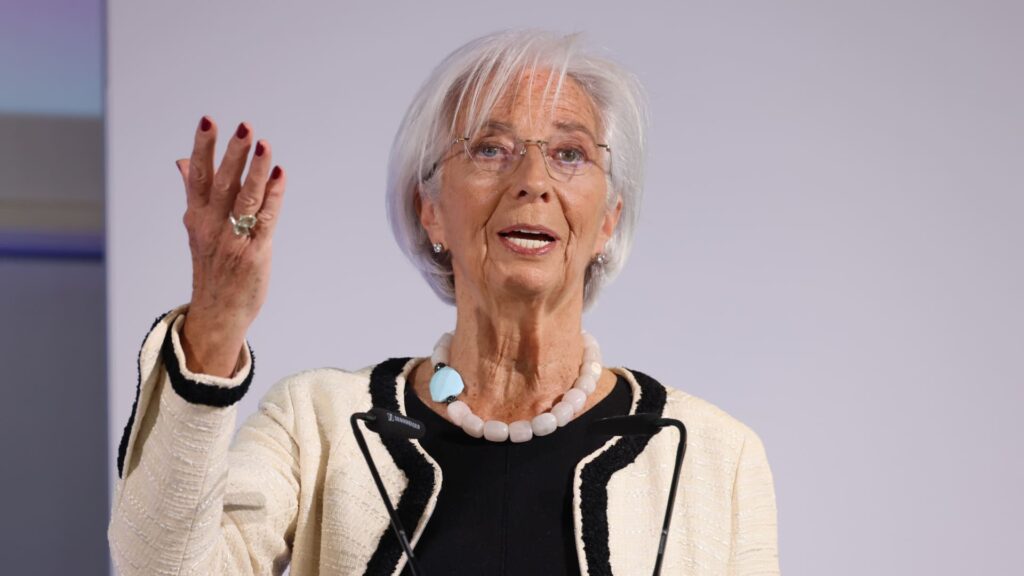European Central Bank President Christine Lagarde at a meeting of the European Central Bank and its observers in Frankfurt, Germany, March 20, 2024.
Bloomberg | Bloomberg | Getty Images
FRANKFURT – The European Central Bank will cut interest rates by another quarter point on Thursday, just days before the Federal Reserve begins its rate-cutting cycle.
Traders widely expect the Federal Reserve to cut interest rates at its meeting on September 17-18 and the European Central Bank’s meeting this week.
“Thursday’s rate cut should be largely non-controversial,” Holger Schmieding, chief economist at Berenberg Bank, told CNBC in an email to clients.
“Almost all recent ECB speakers have confirmed that they want to lower interest rates. Even Bundesbank President Joachim Nagel, who is generally considered a hawk on the ECB Board of Governors, has said that unless the evidence is consistent, Otherwise he will support a rate cut.
Following a landmark rate cut in June, the European Central Bank voted unanimously to keep interest rates unchanged in July. At the time it described the possibility of a rate cut in September as “open”. The ECB’s key interest rate – which helps price various loans and mortgages across the euro zone – currently stands at 3.75% after years of steep rate hikes.
Inflation in the euro area has since fallen further. The overall data in August was 2.2%, a new low in three years. In comparison, the core inflation rate was still higher at 2.8% as the service industry pulled up this indicator.
Frankfurt-based European Central Bank — sets monetary policy for 20 countries in the sharing economy EUR – A new round of employee forecasts will also be released this Thursday. Although some economists predict the euro zone’s new growth outlook will be tougher than in July, no major revisions in inflation or growth data are expected.

“The most worrying thing from recent data is that confidence is weakening and the services sector also appears to be in jeopardy,” Anatoly Annenkov of Societe Generale said in a research note.
“Due to lack of domestic motivation, [demand] Season 2 [the second quarter]Weakness in manufacturing could spread and start to have a larger impact on an otherwise strong labor market.
The key question, of course, is what happens next?
Most analysts expect the ECB to pause when policymakers meet in Ljubljana, Slovenia, in October. Still, it is possible that the central bank decides to cut interest rates sooner rather than later due to the inherent risks of keeping interest rates too high.
At present, the consensus within the ECB’s Governing Council seems to have become more optimistic, believing that the central bank is on the right track to return inflation to its 2% target.

Indeed, some have openly pondered whether faster rate cuts would be appropriate, most notably ECB chief economist Philip Lane.
At the Kansas City Fed’s Jackson Hole economic symposium last month, he said a return to target “has not yet been determined” but added that the ECB “equally” needs to ensure that inflation remains at 2% when it reaches the target. .
He also mentioned that if the European Central Bank maintains interest rates that are too high for a long time, there is a risk that inflation will remain below the target “for a long time.”
